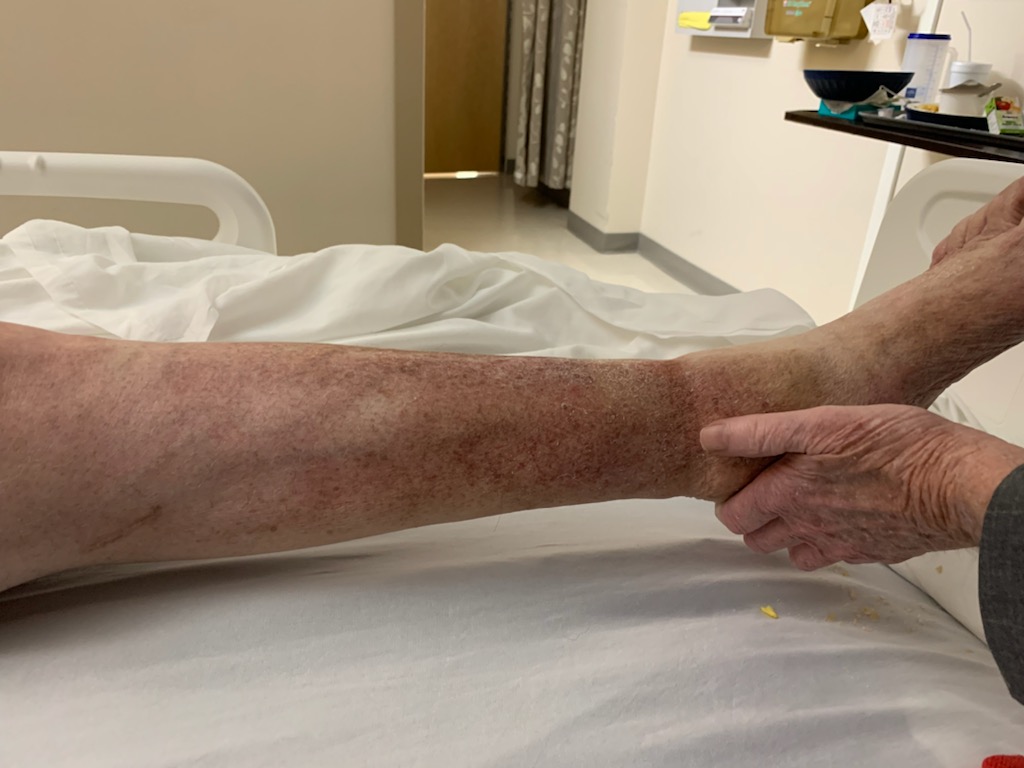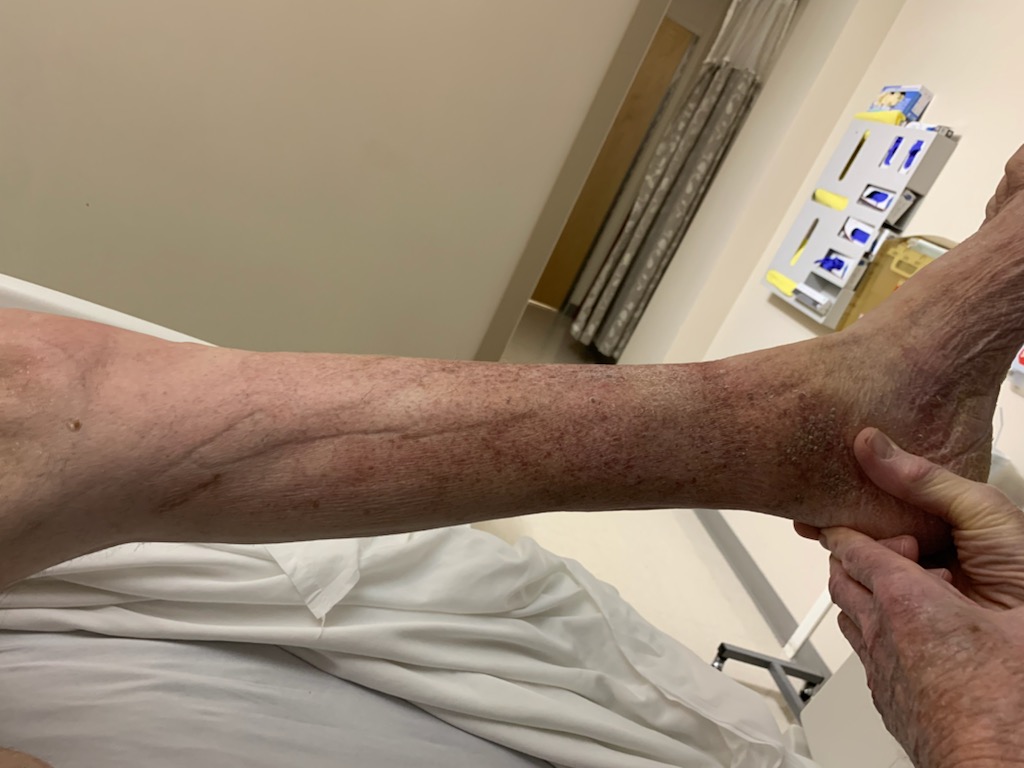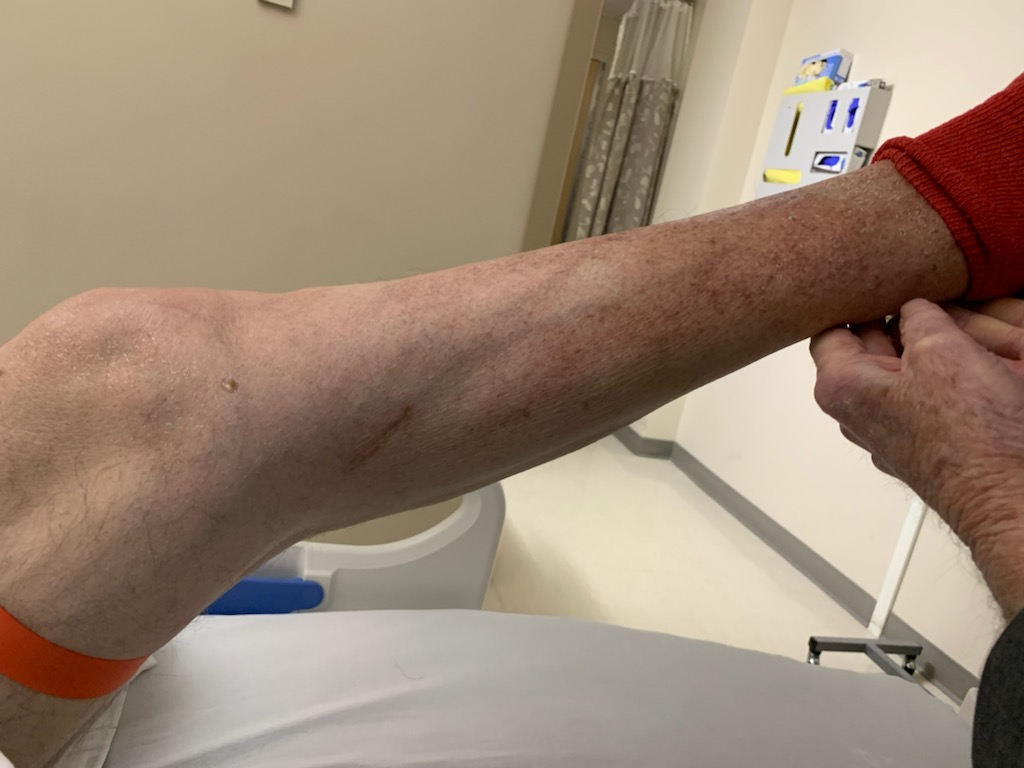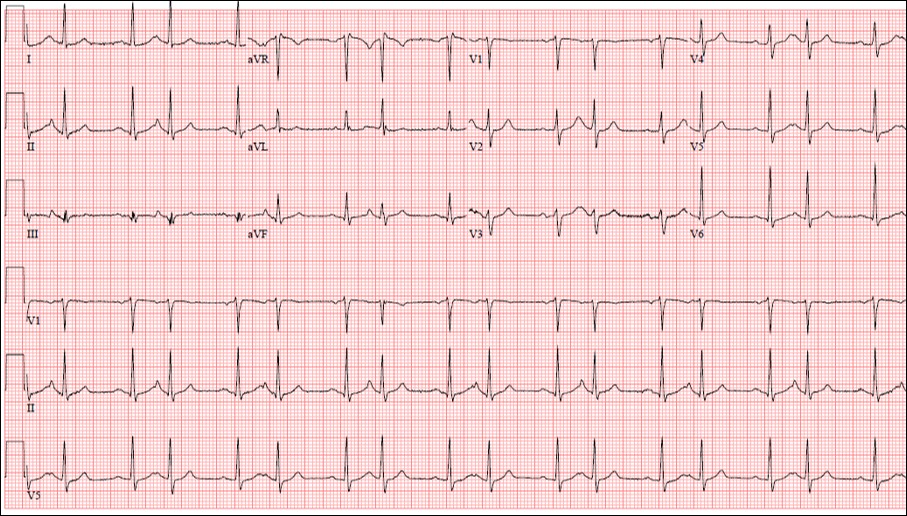Medical Mystery of the Week
You are asked to interpret the results of a 3-stage test performed on a 55-year-old
man (see below). You are given no information as to the patient's history, physical
findings, or laboratory findings.
What is your diagnosis, what additional test(s) would you perform to confirm
your diagnosis, and what treatment, if any, do you recommend? What is the name of
the test?
DIAGNOSIS: Deep venous throbosis (DVT) demonstrated by performing a Perthes" test.
Note that the leg has evidence of stasis dermatitis and the Great Saphenous Vein (GSV)
is visible when the leg is nearly horizontal (Panel A). When the leg is elevated above
the level of the right atrium, the GSV collapses, indicating intact superficial venous
drainage (Panel B). However, when a torniquet is applied to the thigh with enough
force to obstruct superficial veinous return and the leg is elevated, the GSV - which
is connected to the deep veins via communicating veins - no longer collapse indicating
obstruction of the deep veinous system (DVT) (Panel C).


Panel A. Leg at rest. Panel B. Leg elevated.

Panel C. Leg elevated with thigh torniquet.
BONUS QUESTION: What is the rhythm? (see image below). Answer: Atrial bigeminy.

Note the normal QRS complexes (indicative of a supraventricular rhythm) and the differences in the P waves and PR intervals in the bigeminal (second) beat indicating an ectopic atrial focus.